Sherlock Holmes: A Game Of Shadows | 2011


- Locations |
- London;
- Hertfordshire;
- Buckinghamshire;
- Surrey;
- Kent;
- Oxfordshire;
- Wales;
- France;
- Switzerland
- DIRECTOR |
- Guy Ritchie
The fast, snappy and ambitious sequel pits Holmes (Robert Downey Jr) against his nemesis Moriarty (Jared Harris), living out in the open as a mild-mannered professor, but secretly planning to profit from an impending European war.
The story ranges across Europe but was mostly filmed in the UK and although there’s plenty of CGI, there are lots of real locations. Many are familiar but not always recognisable.
There’s a brief location shot of Place de la Cathédrale in Strasbourg, France, as an anarchist bomb explodes in front of the Cathedral.
Baker Street and the famous digs at 221B are a set built at Leavesden Studios in Hertfordshire, the former Leavesden Aerodrome factory, where Mosquitos and Halifax Bombers were once manufactured. The disused facility was used as a studio to film the first Pierce Brosnan Bond movie, GoldenEye, and went on to be home to the Harry Potter films.
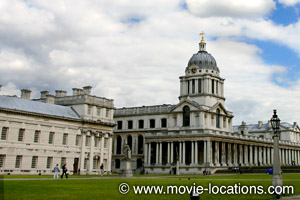
Multi-purpose location, the Old Royal Naval College, King William Walk, London SE10, crops up a few times, first providing the busy streetmarkets of Victorian London through which Holmes tails Irene Adler (Rachel McAdams), just as it had done for the previous Sherlock Holmes.
It’s a double-cross of course and Holmes finds himself confronting her four minders. The fight, too, is staged in Greenwich, but in the covered walkway alongside the Queen’s House, overlooking the Old Royal Naval College.
A one-time royal palace occupied by the dowager Queen Henrietta Maria, wife of Charles I, the house was extensively restored in the 1990s.
Its colonnade previously became turn-of-the-century ‘Russia’ for the honeymoon of Tchaikovsky and Nina in Ken Russell’s The Music Lovers, and the streets of London for Ang Lee’s Sense And Sensibility.
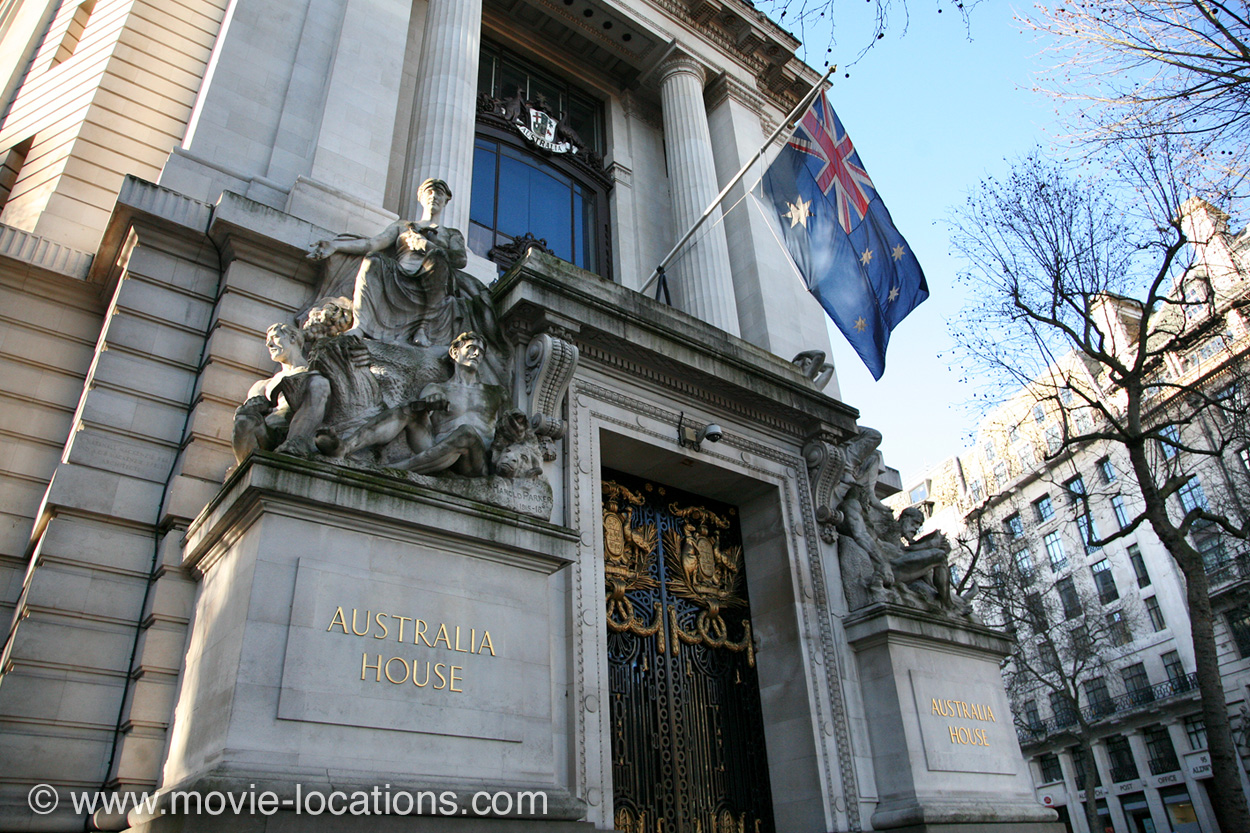
The exterior of the ‘Cromwell & Griff’ auction house, where Adler passes on a mysterious (and booby-trapped) package, is the Naval College too, but the interior is Australia House on The Strand, at Aldwych and Arundel Street, famously seen as ‘Gringott’s Bank’ in Harry Potter and the Philosopher’s Stone and not-so-famously as Moscow’s ‘Kremlin’ in X-Men: First Class. Unfortunately, it’s not open to the public.
With his nuptials approaching, Dr John Watson (Jude Law) looks for ward to enjoying a raucous stag night, driving one of those new-fangled horseless carriages (built specially for the film) through a digitally recreated Trafalgar Square to the ‘Theatre of Varieties’, seemingly on the Thames riverside.
He’s appalled to discover that Holmes has hijacked the evening for his own ends, and a meeting with his brilliant older brother Mycroft (Stephen Fry).
The theatre is Wilton’s Music Hall, 1 Grace’s Alley, Wellclose Square, off Cable Street, in London’s East End. The usually stripped down (and photogenically distressed) auditorium is brought back to glittering life with loads of period dressing, including a recreation of its original 1725 Mahogany Bar.
As Holmes thwarts the attack of an exceptionally acrobatic Cossack assassin, sent by Moriarty to kill gypsy tarot reader Sim (Noomi Rapace), the skills of a freerunner as well as a stunt man were called upon to traverse the theatre's multiple levels.
It all looks shockingly reckless, but we’re assured the historic structure was treated with the utmost respect.
The theatre has been seen in two biopics – Richard Attenborough’s Chaplin, with Robert Downey Jr, again, as the silent comic, and Karel Reisz’s Isadora, with Vanessa Redgrave. It’s also the venue for the all-female production of Macbeth in John Landis’s Burke And Hare, as a nightclub run by the notorious gangster twins in Peter Medak’s The Krays and as the theatre festooned with tutus in The Danish Girl.
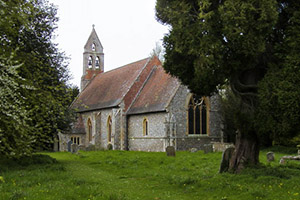
When Watson does eventually arrive, hungover and dishevelled, for his wedding to Mary (Kelly Reilly), it’s at St Mary’s Church, Pyrton, about ten miles southeast of Oxford in Oxfordshire.
Holmes responds to an invitation from the professor to visit him at his college, and a although there’s a brief stock shot establishing this as King’s College, Cambridge, the college quad at which Holmes arrives is the Inner Courtyard of Hampton Court Palace, East Molesey in Surrey. Once rarely used for filming, the royal Palace is now increasingly seen on-screen, in The Theory Of Everything, Pirates Of The Caribbean: On Stranger Tides, Bryan Singer’s Jack The Giant Slayer and Terrence Malick’s The New World.
There’s some verbal sparring and a not-so-veiled threat to the newlywed Watson in Moriarty’s study, which is the Library at another favourite location, Hatfield House, Hatfield, Hertfordshire. The same house was used as headquarters of the ‘Temple of the Four Orders’ in Ritchie’s earlier Sherlock Holmes, among its appearances in many other productions.
The threat is followed through when Watson and Mary’s proposed honeymoon in Brighton is disrupted by Moriarty’s henchmen, and Holmes and Watson find themselves instead heading to France.
The channel ferry, by the way, is the PS Waverley, the world's last sea-going paddle steamer, which you can more usually find on the River Clyde in Glasgow.
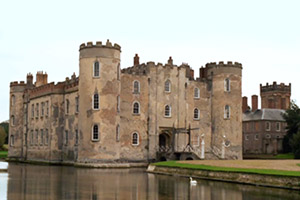
Poor Mary finds herself bundled off to stay safely with the strangely nude Mycroft in his country home. This is Shirburn Castle, former seat of the Earls of Macclesfield in the village of Shirburn, 6 miles south of Thame, in Oxfordshire. The castle also became the convent laundry in Stephen Frears’ 2013 Philomena, with Judi Dench. It’s currently deserted, in a serious state of disrepair, and not accessible to the public.
There’s little of the real France for Holmes and Watson – the gypsy encampment by the lake where they find Sim is in Richmond Park, Surrey.
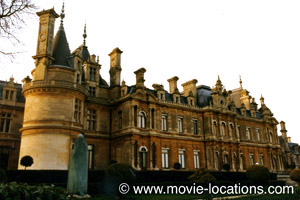
Moriarty is benevolently signing books in Waddesdon Manor, English home of the Rothschild family, at the west end of Waddesdon village, six miles northwest of Aylesbury on the A41, in Buckinghamshire, and it’s open to the public.
It’s not entirely unfitting that the house should stand in for fin-de-siecle ‘Paris’ as it’s designed very much as a French chateau – it provided the ‘Parisian’ locations for Carry On – Don’t Lose Your Head and was also seen in rogue Bond movie Never Say Never Again and in Hindi smash Kabhi Khushi Kabhie Gham...
A clue leads Holmes to deduce that the Anarchist group is running a secret printing press from a wine cellar. The cellar is accessed from the busy kitchen of the Parisian hotel, which is actually the kitchen of Hampton Court Palace.

The ‘cellar’ itself is another old favourite given a new look.
Surprisingly it’s the vaulted Undercroft beneath the Chapel at Old Square, Lincoln’s Inn, which is enclosed to look like a subterranean chamber. A similar trick was used for Richard Loncraine’s 1995 film of Richard III, with Ian McKellen, when the space was transformed into one of the royal chambers. The Undercroft is actually open to the elements as you can see in Tom Jones.
Learning from the anarchist leader Lavache that the group is now controlled by an Englishman – presumably Moriarty – Holmes guesses that the next explosion is intended to be in the Paris opera house.
The tunnels used to reach the opera are actually those beneath Fort Amherst in Chatham, Kent.
In fact, Moriarty’s real target is the diplomatic meeting at the nearby ‘Hotel Du Triomphe’, The hotel exterior is is Waddesdon Manor again, significantly extended with digital trickery.
The interior is Lancaster House, Pall Mall, a much-used stand-in for nearby ‘Buckingham Palace’ in productions such as King Ralph and National Treasure: Book Of Secrets. It’s another place that’s not generally open to the public.
The restaurant at the foot of the ‘Eiffel Tower’, where Holmes, Watson and Sim meet up, was a set built in the gardens of Hampton Court. The Privy Garden here was also used as the ‘Jardin des Tuileries’ where Moriarty likes to feed the pigeons.
From ‘France’, the party moves on to ‘Germany’ and the munitions factory acquired by Moriarty, with Holmes obliged to reveal that horsemanship is not among his many accomplishments.

The forest through which they ride is Bourne Woods, near Farnham in Surrey, previously seen in Gladiator, War Horse and The Wolfman.
The mountains are around Capel Curig in Snowdonia, North Wales; where the lake is Ffynnon Llugwy.
Chatham Historic Dockyard in Kent is transformed into the ‘Meinhard Munitions Factory’. Chatham provided the London docks for the previous Sherlock Holmes film, and also became the town of ‘Montreuil’ is Les Misérables.
There’s no rail terminus at Chatham docks. The railway sidings are the Didcot Railway Centre, Didcot in Oxfordshire, a former Great Western Railway engine-shed and locomotive stabling point converted into a railway museum and preservation engineering site. The Centre is another location you can see in The Danish Girl as well as in Joe Wright’s 2012 version of Anna Karenina, with Keira Knightley.
Escaping in excruciating slo-mo (through Bourne Woods again), they leap aboard a train which passes through the snowy landscapes of Triengen, in Switzerland.
The spectacular castle straddling the Reichenbach Falls in the Swiss Alps, in which the climactic peace talks are held, is all CGI, and the castle interior a studio set. The snow-covered courtyard in which the carriages arrive, though, is Knole House in Kent. Knole also provided the exterior of the ‘Palace of Whitehall’ for The Other Boleyn Girl, and the prison courtyard for Pirates Of The Caribbean: On Stranger Tides.
The chess theme, hinted at throughout the film, comes to the fore as Holmes and Moriarty have their final confrontation (notice that the ballroom floor is a giant chessboard?).
There are still a just couple of brief flashback scenes:
‘Scotland Yard’, where Inspector Lestrade (Eddie Marsan) watches as Moriarty’s fiendish code is cracked, is the Marble Hall back at Hatfield House; while Moriarty’s lecture – attended by a heavily disguised Holmes, is the Painted Hall of the Royal Naval College, though barely recognizable as the famously elaborate artwork is scrupulously avoided.





